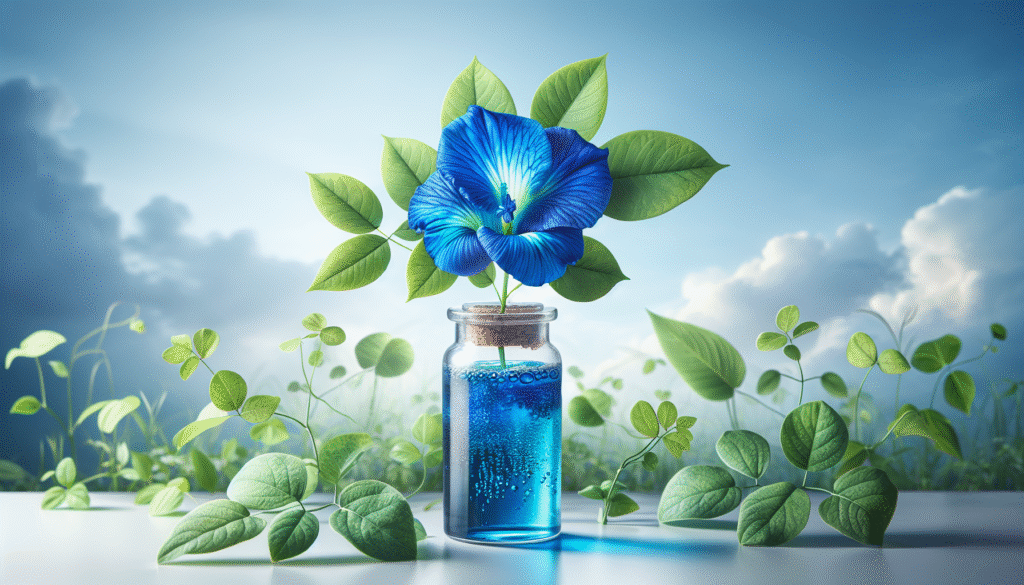
Have you ever considered the implications of the materials you use in your everyday life? In recent years, there’s been a noticeable shift towards sustainability across various sectors, including the use of dyes and pigments. One chemical that has garnered significant attention is Methylene Blue. Traditionally sourced through non-sustainable methods, this compound is now setting an example for transformation through sustainable practices.

Understanding Methylene Blue
Methylene Blue, a synthetic dye, finds applications in a variety of fields including biology, medicine, and textile industries. This vibrant blue compound serves not only as a dye but also as a redox indicator and treatment for certain medical conditions. Understanding its chemistry and versatility becomes crucial as we delve into its sustainability discussions.
Chemical Properties
Methylene Blue (C16H18ClN3S) is a thiazine dye that appears as a bright blue powder. It is soluble in water and exhibits light-absorbing characteristics that make it useful in different applications. Your understanding of these properties will inform your choices regarding its use, especially as sustainable alternatives emerge.
Applications of Methylene Blue
-
Medical Uses: Known for its role in treating conditions such as methemoglobinemia, Methylene Blue serves as a crucial medical agent.
-
Scientific Research: As a redox indicator, researchers use it extensively in various biochemical experiments.
-
Textile Industry: It functions as a colorant in textiles, plastics, and even food products.
-
Aquaculture: Methylene Blue is employed in fish farming to treat parasitic infections, showcasing its versatility in biological applications.
Recognizing these various applications allows you to appreciate the ongoing demand for Methylene Blue while understanding the potential for sourcing alternatives sustainably.
The Environmental Impact of Conventional Methylene Blue Production
While Methylene Blue boasts numerous applications, its traditional method of production has significant environmental ramifications. Conventional methods often involve harmful chemicals and contribute to pollution, raising concerns about their ecological footprint.
Toxic Byproducts
The synthesis of Methylene Blue typically involves numerous chemical reactions that produce toxic byproducts. These byproducts can contaminate soil and water supplies, affecting both ecosystems and human health. If you are aware of these implications, it can influence how you perceive and select chemical products.
Resource Depletion
The non-renewable resources used in traditional Methylene Blue production further exacerbate sustainability issues. With growing global populations, the demand for chemicals increases, leading to resource depletion. The pressure on these finite resources poses ethical questions regarding their sustainability.
The Need for Sustainable Sources
Addressing the environmental concerns associated with traditional Methylene Blue production has sparked the quest for sustainable sourcing alternatives. The urgency to find eco-friendly methods has never been more pronounced, and you too can play a part in advocating for sustainable practices.
What Makes a Source Sustainable?
A sustainable source is one that meets the needs of the present without compromising the ability of future generations to meet their own needs. In the context of Methylene Blue, this means finding methods that:
- Utilize renewable resources
- Minimize waste and harmful byproducts
- Mitigate ecological damage
Understanding these principles is essential for supporting efforts in the transition toward sustainable practices, and your informed choices can catalyze significant change.
Sustainable Methods for Producing Methylene Blue
A myriad of innovative techniques are currently being developed to produce Methylene Blue sustainably. These methods focus on reducing environmental impact while maintaining efficiency and quality.
Bio-Based Production Techniques
One promising alternatives involves biosynthesis. Rather than relying on traditional chemical processes, biosynthesis utilizes microorganisms or plant materials to generate Methylene Blue.
-
Benefits of Bio-Based Techniques: These techniques reduce toxic byproducts and leverage renewable resources, making them more sustainable.
-
Microalgae as a Source: Research suggests that certain strains of microalgae can produce Methylene Blue through metabolic pathways, presenting a fascinating avenue for development.
Green Chemistry Approaches
Green chemistry emphasizes environmental responsibility in chemical manufacturing processes. By employing green chemistry principles, industries can produce Methylene Blue with minimal ecological impact.
-
Catalytic Processes: Utilizing efficient catalysts can lower energy requirements and reduce waste.
-
Alternative Solvents: Switching to less toxic solvents can drastically improve the sustainability profile of Methylene Blue production.
These innovative methodologies stand at the forefront of sustainable practices, providing opportunities for you to advocate for and support industries that prioritize environmental welfare.

The Role of Collaboration in Transitioning to Sustainable Sources
Transitioning to sustainable sources of Methylene Blue goes beyond innovative technologies. It requires collaboration across various sectors, including scientific research, industry practices, and consumer advocacy.
Industry Partnerships
Companies aiming to adopt sustainable practices can benefit from partnerships with research institutions. These collaborations often lead to breakthroughs in sustainable production methods and foster shared goals for reducing environmental impact.
Consumer Awareness and Demand
As a consumer, your choices carry weight. By supporting brands that prioritize sustainability, you can influence market trends. Increased consumer demand for sustainably produced Methylene Blue will encourage manufacturers to invest in eco-friendly practices.
Current Trends in Sustainable Methylene Blue Production
As the movement towards sustainability gains momentum, current trends highlight various approaches being adopted across the globe, setting the stage for a significant shift in how Methylene Blue is sourced.
Case Studies of Successful Implementation
-
Case Study: Company A
This company has integrated bio-based production methods, yielding Methylene Blue with significantly lower environmental impact. Their process uses sustainably sourced biomaterials, showcasing a viable alternative to traditional methods. -
Case Study: Company B
Company B implemented a green chemistry approach that significantly reduced waste and energy usage in their manufacturing process. They have achieved accreditation for their sustainable practices, proving that profitability and environmental responsibility can coexist.
These case studies illustrate the potential and promise of sustainable Methylene Blue production. They reflect the growing trend of aligning economic goals with ecological responsibility, inviting you to advocate for similar practices in your choices.
The Future of Methylene Blue: Prospects and Possibilities
The future of Methylene Blue rests on continued innovation and commitment to sustainability. As you consider the potential impacts of your consumption choices, the following possibilities emerge:
Innovative Alternatives
Research continues into developing alternative dyes and pigments that are not only sustainable but may also outperform traditional options. Innovations in synthetic biology and materials science may yield even more advanced alternatives.
Regulatory Frameworks
Government regulations focused on environmental sustainability could create an environment where sustainable production becomes the norm rather than the exception. By supporting policies that mandate greener practices, you contribute to a larger movement towards sustainability.
Community Engagement and Education
Sustainability efforts require public involvement and awareness. Steps toward engaging communities in educational initiatives can foster a culture of eco-consciousness and advocacy for sustainable practices. You can play an essential role in this engagement.
Conclusion
The journey toward sustainable sources of Methylene Blue embodies a broader conversation about our responsibilities as consumers, businesses, and citizens. As more industries pivot toward sustainable practices, understanding the implications of your choices becomes increasingly critical. By advocating for eco-friendly alternatives and supporting innovations, you can contribute to a future where sustainable sourcing becomes the standard.
Your involvement is not merely about choosing between products; it’s about reshaping entire industries. With growing awareness and the willingness to hold companies accountable, we can all participate in driving positive change. The trend toward sustainable Methylene Blue production exemplifies a larger shift toward responsible consumption that can resonate across various sectors. As this movement grows, you have the power to influence a greener future.